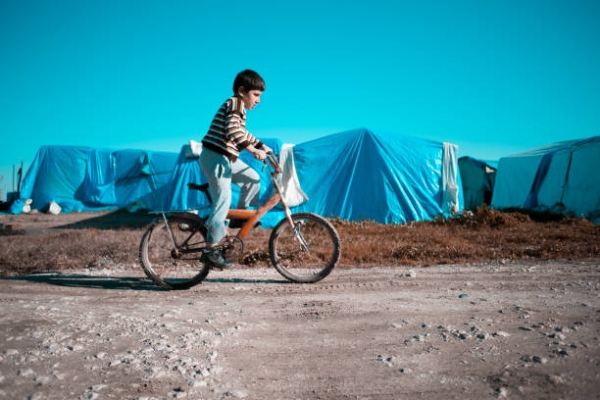Action on Armed Violence (AOAV) is a UK based non-profit, non-governmental organization (NGO) devoted to research and advocacy on armed violence worldwide. The organization reports on global armed violence and strives to minimize harm and rebuild lives affected by armed violence. Its research primarily concerns methods to eliminate armed violence, the consequences of explosive weapons at the point of impact, and the reverberating impacts of explosive violence. AOAV has promoted and contributed to international agreements related to disarmament. Verity Hubbard, a consultant researcher for AOAV, has produced this report on the involvement of children in armed conflict.
According to the Paris Principles on the Involvement of Children in Armed Conflict (2007), child soldiers are any individual under 18 years of age “who is or has been recruited or used by an armed force or armed group in any capacity; they can be used as fighters, cooks, porters, spies, or for sexual purposes.” Recruiting and using child soldiers is prohibited by the Geneva Convention and the Convention on the Rights of the Child, and is one of the United Nations (UN) Six Grave Violations against children during armed conflict. Children are often used as soldiers in regions facing protracted conflict and possess strategic value to armed groups. Their psychological vulnerability makes them easier to “recruit, indoctrinate, and coerce into participating in dangerous situations,” and their potentially limited understanding of death can be exploited easily.
The report found that explosive violence commonly produces the “conditions for children to be recruited by armed groups, especially those who have been displaced in refugee and internally displaced persons (IDP) camps.” Lacking family members or protection mechanisms, orphans are particularly prone to being preyed on by armed groups. As shown by data from AOAV’s Explosive Violence Monitor, civilians in Syria, Afghanistan, Yemen, Somalia, and Libya account for the most casualties from explosive violence, and all of these countries have been named on the United States’ Child Soldiers Prevention Act list of nations “whose armed forces, police, or other security forces, or government-backed armed groups recruit or use child soldiers.”
It has been long known that children are used to make and operate explosive weapons, and improvised explosive devices (IEDs) “are the most well documented explosive weapons used by child soldiers.” According to the report, as many as 40% of child soldiers are estimated to be girls, many of which are used as sex slaves. Girls are often “the silent victims in war,” as they most commonly occupy supporting roles in conflict, and thus are not noticed by child protection organizations or reported in official statistics. Children are frequently utilized for highly dangerous tasks such as laying or clearing mines, making them more likely to be injured or killed than adult soldiers.
Participating in conflict-related operations has long-lasting impacts on a child’s life. The absence of education and an inability to function in a post-conflict environment makes children more prone to economic disadvantages. Furthermore, a child’s prior involvement in conflict makes them especially likely to be recruited again, as child soldiers often struggle to re-integrate into a society. This makes conflict recurrence more likely, and perpetuates a dangerous cycle of children returning to conflict time and time again.
To know more, please read:
www.aoav.org.uk/2021/explosive-violence-and-child-soldiers/
Author: Sitara Sandhu; Editor: Gabriella Pavlakis




